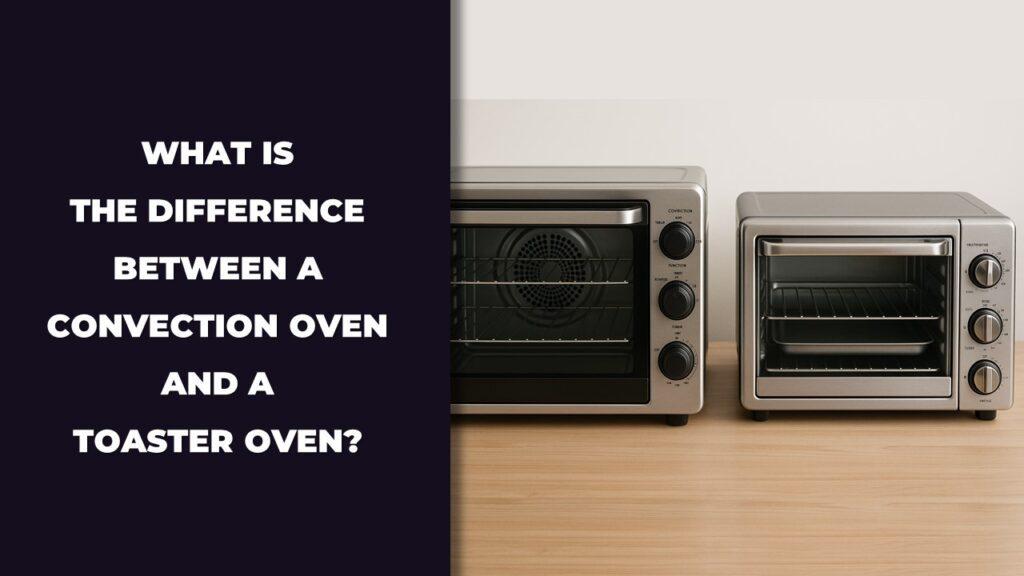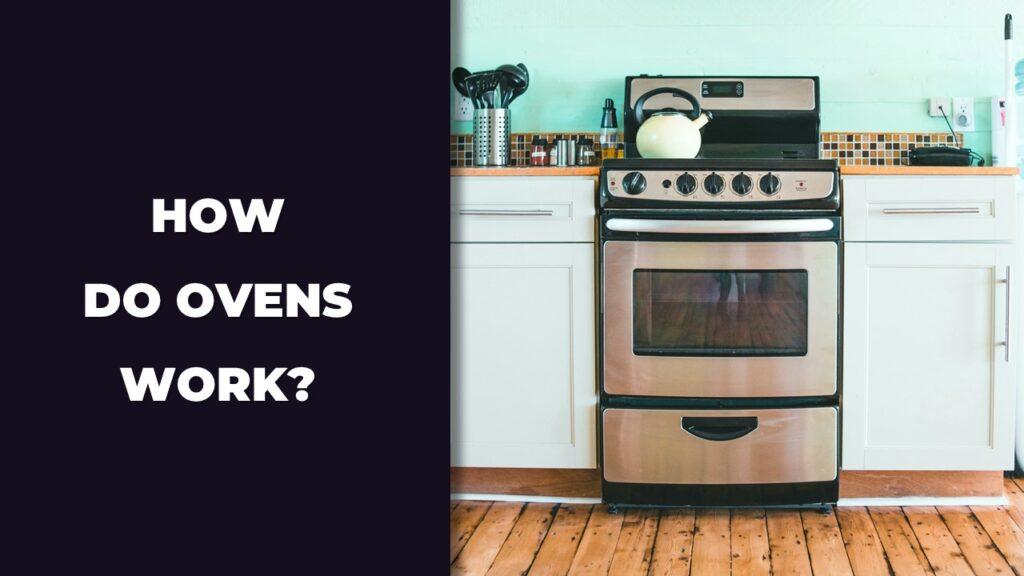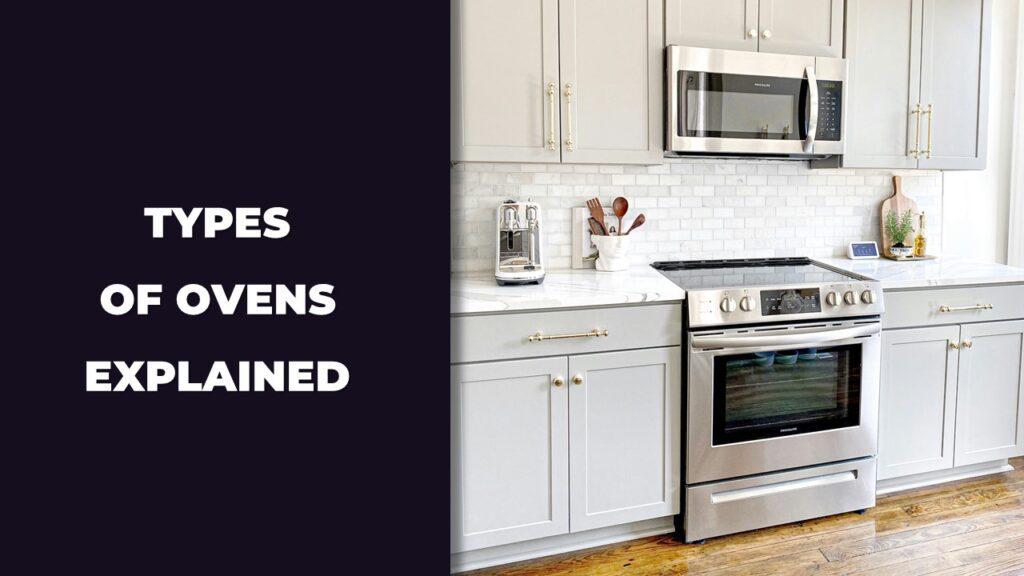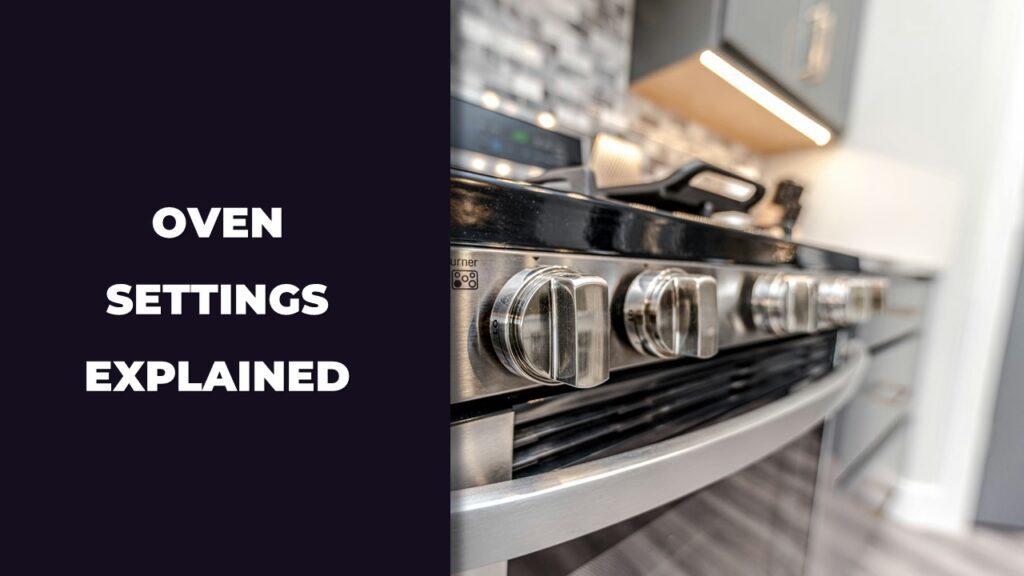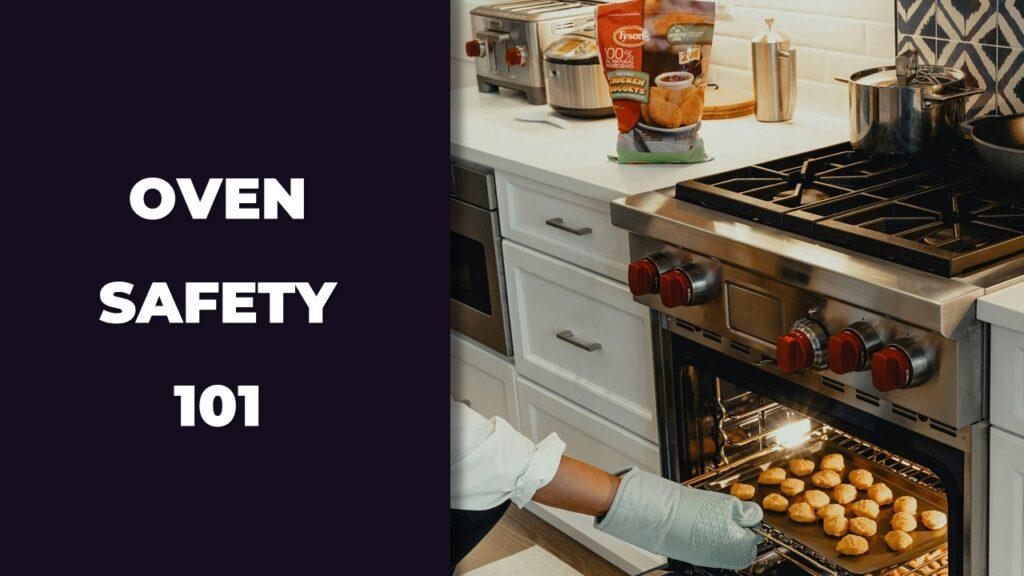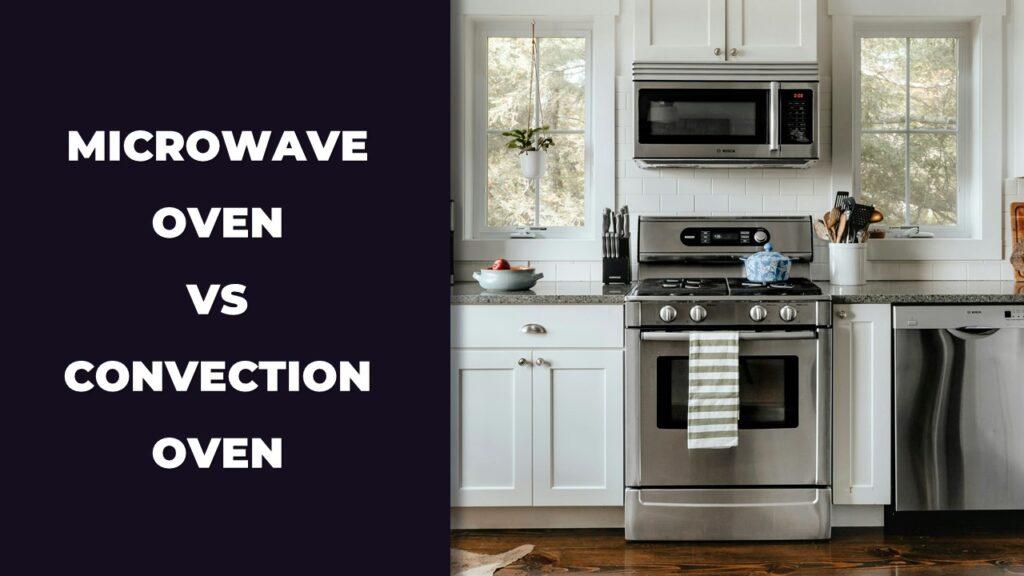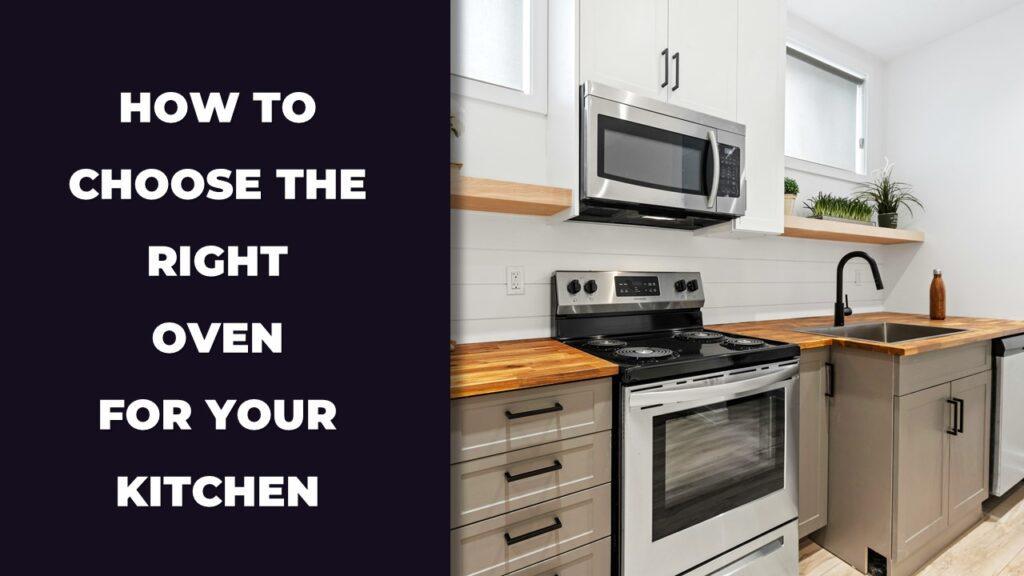
To choose the right oven for your kitchen, consider your cooking habits, space, and whether you need gas or electric. A built-in electric oven suits modern layouts, while freestanding models are easier to install. Convection ovens are great for baking. Larger families may prefer double ovens, and busy cooks might appreciate smart, self-cleaning options.
In this guide, we are going to help you choose the oven that fits your kitchen, lifestyle, and cooking style. You’ll learn about different oven types, sizes, features, and functions so you can make a smart and practical choice.
Know Your Kitchen First (Space, Layout & Power Source)
To pick the right oven, first look at your kitchen’s layout, how much space you have, and whether it’s set up for gas or electric. These three things will narrow down your choices quickly and help avoid surprises during installation.
Here’s how to check what your kitchen can handle:
- Measure the Oven Space Carefully: Use a tape measure to check the width, height, and depth of the spot where your oven will go. Standard built-in ovens are usually 60cm wide, but there are compact (45cm) and large (90cm) options too.
- Check for Proper Ventilation: Your oven will need space for airflow to prevent overheating. Most built-in models need a few centimeters of clearance on each side and at the back.
- Know Your Power Setup: Look behind your current oven or ask an electrician. If there’s a gas line, you can consider a gas oven. If it’s only electric, stick with electric models. Larger electric ovens may need a higher amp plug (like 16 or 32 amps), not just a regular outlet.
- Decide on Fit Type: Wall ovens work best at eye level and often pair with a separate cooktop. Under-counter ovens fit into base cabinets and save space. Freestanding ovens combine both in one unit and are easier to replace.
- Plan for Delivery and Installation: Make sure the oven will fit through doorways and into place. Also, check if professional installation is required, especially for gas or high-voltage electric units.
Getting these details right from the beginning saves time, money, and the hassle of returns or last-minute changes.
Understand The Main Types Of Ovens (With Pros And Cons)
There are four main types of ovens: freestanding, built-in, wall ovens, and compact or double configurations. Freestanding ovens are easy to install and often include a cooktop. Built-in ovens fit neatly into cabinets. Wall ovens are mounted at eye level and often used with a separate cooktop. Choosing between single, double, or compact ovens depends on how much you cook and the space you have.
Freestanding Ovens
Freestanding ovens combine an oven and cooktop in one unit and are designed to slide into a kitchen gap without needing to be built into cabinetry.
Pros:
- Easy to replace or move
- Often more affordable
- Includes cooktop (gas or electric)
Cons:
- Doesn’t offer a seamless look
- Takes up floor space
- Limited size options
Built-In Ovens
These are designed to be installed inside your cabinetry, usually below the countertop or in a cabinet tower.
Pros:
- Sleek, modern appearance
- Can be placed at a comfortable height
- Offers flexibility in cooktop placement
Cons:
- Requires professional installation
- Usually more expensive
- Not as easy to replace
Wall Ovens
Wall ovens are built into the wall at eye level, often paired with a separate cooktop or microwave.
Pros:
- Easy to access without bending
- Great for custom kitchen layouts
- Can be single or double
Cons:
- Needs enough vertical cabinet space
- Installation can be tricky
- Usually higher cost
Single Vs Double Vs Compact Ovens
These options refer to the internal cooking configuration of the oven and how many separate cavities you get.
- Single Oven: One cooking space; ideal for most homes
- Double Oven: Two cavities; great for cooking multiple dishes at once
- Compact Oven: Smaller size; perfect for tiny kitchens or occasional use
Pros:
- You can pick based on your cooking load and space
- Double ovens allow better multitasking
- Compact ovens save space
Cons:
- Double ovens cost more and take up more room
- Compact ovens may feel limited for large meals
- Not all cabinets fit all oven types
Match Oven To Cooking Habits (One Size Does Not Fit All)
The best oven for you depends on how and what you cook. If you bake often, roast large meals, or just heat leftovers, different features will matter. Matching your oven to your cooking style helps you get better results and avoid paying for things you’ll never use.
Here’s what to look for based on your routine:
- Bakers: Choose a convection oven with even heat distribution, reliable temperature control, and optional steam for crusty bread.
- Meal Preppers or Large Families: Look for a double oven or a large-capacity single oven. Extra racks and wide trays can save time when batch cooking.
- Quick Cooks: Pre-set cooking modes, rapid preheat, and smart ovens with app controls can make everyday meals faster and easier.
- Health-Conscious Eaters: Steam ovens or models with air fry functions offer healthier cooking options without drying out food.
- Minimal Cleaners: Go for ovens with self-cleaning (pyrolytic) or steam-clean modes if you prefer less scrubbing.
Choosing an oven that fits how you actually cook makes a big difference in how often you’ll enjoy using it.
Fuel Type Deep Dive (Electric Vs Gas Vs Hybrid Ovens)
The fuel type you choose for your oven—electric, gas, or hybrid—affects how it cooks, how it installs, and what it costs to run. Electric ovens give more precise heat, while gas ovens heat up quickly and often cost less to operate. Hybrid or dual-fuel setups combine both, offering the best of each.
Electric Ovens
Electric ovens are the most common type in modern kitchens, especially in homes without a gas line.
Pros:
- Heats evenly, great for baking
- Offers convection and advanced features
- Often easier to install in newer homes
Cons:
- Slower preheat time
- Higher energy bills in some areas
- Needs a strong electrical outlet (often 16 or 32 amps)
Gas Ovens
Gas ovens use a flame for heating and are often preferred for roasting or broiling due to the moist heat they produce.
Pros:
- Faster to heat up
- Lower long-term running costs
- Moist cooking environment for better roasts
Cons:
- Uneven heat, especially in older models
- Needs a gas line and professional installation
- Fewer advanced features compared to electric ovens
Hybrid Or Dual-Fuel Setups
These ovens offer a gas cooktop paired with an electric oven. They’re popular in high-end kitchens and with serious home cooks.
Pros:
- Precise electric oven temperature with fast gas cooktop control
- Best of both fuel types
- Ideal for multitasking or varied cooking
Cons:
- More expensive
- Needs both a gas line and proper electrical connection
- Installation can be more complex
Oven Size And Capacity (What’s Right For Your Household?)
The right oven size depends on how many people you cook for and how often. Oven capacity is measured in liters. Small ovens (30–45L) are great for solo use, while larger ones (70L+) fit family meals or big batch cooking. A good fit saves energy and helps your kitchen feel less cramped.
Here’s a quick guide:
- 30–45 Liters: Good for singles, couples, or small spaces. Compact ovens fit well in apartments or as second ovens.
- 50–70 Liters: Ideal for small to medium families. Offers enough space for daily use and occasional hosting.
- 70 Liters and Above: Great for big families, holiday cooking, or those who meal prep in bulk. Also useful for double oven setups.
- XL and XXL Ovens (Up to 90+ Liters): Can cook on multiple racks at once. Handy for entertainers or home chefs who cook large dishes regularly.
- Don’t Forget Dimensions: Internal capacity isn’t the only thing—make sure the oven’s exterior fits your kitchen cutout. Standard widths are usually 60cm, but there are also compact (45cm) and wide (90cm) options.
Choosing the right size avoids wasted energy and makes your cooking routine more efficient.
Heating Types & Cooking Modes – Decode The Labels
Oven heating types and cooking modes affect how evenly and quickly your food cooks. The main types include conventional heat, convection (fan-assisted), grill or broil, steam, air fry, and dedicated pizza modes. Each has its own benefit, and knowing the difference helps you pick an oven that matches how you cook most.
Conventional (Top/Bottom Heat Only)
This is the classic heat method. Heat comes from either the top or bottom element, or both, without any airflow assistance.
Best For:
- Slow roasts
- Delicate baking like custards or sponge cakes
- Recipes that need steady, gentle heat
Keep In Mind:
- Heat rises, so food on the top shelf cooks faster than on the bottom
- No fan means longer cooking times and possible hot spots
Convection (Fan-Forced)
Convection ovens use a fan to blow hot air around the oven, giving faster and more even cooking.
Best For:
- Baking cookies, pies, and bread
- Cooking multiple trays at once
- Crisping vegetables and meats
Why People Love It:
- Cuts down on cooking time
- Reduces the need to rotate dishes mid-way
Grill/Broil Mode
This mode uses intense heat from the top element, similar to a barbecue grill.
Best For:
- Melting cheese
- Crisping the tops of casseroles
- Quick-cooking thin cuts of meat or fish
Heads-Up:
- Food needs to be close to the top heating element
- Can burn quickly if left unattended
Steam & Combination Modes
Steam ovens cook with hot vapor or a mix of steam and dry heat, helping food stay moist.
Best For:
- Baking bread with a crusty finish
- Cooking fish, veggies, or rice
- Reheating food without drying it out
What’s Different:
- Some models offer full steam; others just inject bursts
- Steam helps preserve nutrients and texture
Air Fry & Pizza Modes
These modes are tailored for specific cooking results.
Air Fry Mode:
- Cooks with high-speed hot air
- Great for crispy fries, chicken wings, or frozen snacks
- Uses little or no oil
Pizza Mode:
- Combines bottom heat with convection
- Delivers a crisp crust and evenly cooked toppings
- Ideal for homemade or frozen pizza
Smart Oven Features (What’s Worth It And What’s Not)
Smart ovens offer tech features like remote control, cooking presets, and voice commands. Some make daily cooking easier, while others might just be extras you rarely use. Focus on features that save time or improve cooking results.
Here’s what’s actually helpful:
- Wi-Fi App Control: Lets you preheat, monitor, or turn off the oven from your phone. Handy if you’re busy or forgetful.
- Voice Assistant Integration: Works with Alexa or Google Assistant. You can say “preheat to 375” without touching the oven.
- Auto Cook Presets: Choose a food type, and the oven sets the time and temp. Great for frozen meals or common recipes.
- Smart Temperature Sensors: These check doneness and shut off the oven when food is ready. Some even send alerts to your phone.
- Energy Tracking: Some smart ovens log usage so you can spot which modes use more power. Helpful if you’re watching bills.
What’s often not worth it:
- Overloaded Displays: Too many menus or touchscreen-only controls can be more annoying than helpful.
- Rarely Used Modes: Fancy features like “slow cook” or “proofing” are nice but not necessary unless you bake often.
When it comes to smart features, it’s not about having the most—it’s about what actually makes cooking easier for you.
Cleaning Options
Ovens come with different cleaning systems, from simple manual scrubbing to advanced self-cleaning features. Manual models need more effort, while pyrolytic and steam cleaning options save time and reduce harsh chemical use. The right choice depends on how often you cook and how much mess you’re willing to deal with.
Manual Clean (Budget Models)
Manual-clean ovens are the most basic and usually found in entry-level models. You’ll need to clean them the old-fashioned way—with oven cleaner, a sponge, and some elbow grease. They cost less upfront but require regular attention, especially if spills aren’t wiped up quickly. While there’s no added cleaning tech, many people still go for this option if they rarely use their oven.
Catalytic Liners
Catalytic liners are special panels inside the oven that absorb grease during cooking. When the oven heats up to around 200°C, the liners break down and burn off the fat. While this sounds automatic, it’s not a full cleaning system. You’ll still need to clean the door, shelves, and corners by hand. It’s a low-maintenance solution that works best if you cook fatty foods regularly.
Pyrolytic Self-Cleaning
Pyrolytic ovens make cleaning much easier by heating the oven to over 400°C, turning all grease and spills into ash. Once the cycle is done and the oven cools, you just wipe out the ash with a cloth. It’s one of the most effective ways to clean an oven without using chemicals. However, it can take a couple of hours and uses a fair bit of electricity, so it’s best for people who cook often and want the least effort.
Steam-Assisted Cleaning
Steam-assisted cleaning uses a bit of water to soften up grime inside the oven. You pour water into a special tray, turn on the steam mode, and let the moisture loosen stuck-on food. After the cycle, you wipe it clean. It doesn’t burn off residue like pyrolytic cleaning but works well for light messes and regular upkeep. It’s quick, gentle, and energy-efficient—ideal for people who clean their ovens often in small sessions.
Design, Finish, And Control Options
The look and feel of your oven can make a big difference in how it fits your kitchen and how enjoyable it is to use. Design includes the color and finish, while controls affect how easily you can set temperatures and cook modes. Some people want a sleek, modern touch display, while others prefer simple, no-fuss knobs.
Color and Finish Choices
Most ovens come in stainless steel, black, or white finishes. Stainless steel is a classic pick for modern kitchens because it matches other appliances and is easy to wipe clean. Matte black or dark glass finishes look stylish and hide smudges, though they can show dust. If you like a retro or bold look, some brands offer colorful finishes too. The key is to choose something that matches your cabinets, countertops, and other appliances so your kitchen feels put together.
Control Types
Ovens now offer different types of control panels, including mechanical knobs, digital buttons, or fully touch-sensitive displays. Knobs are reliable and easy to use, especially for those who prefer simple, tactile feedback. Digital buttons add more precision and can include timers or cooking presets. Touchscreens look sleek and are easy to clean, but they can be confusing if overloaded with options. It all depends on whether you prefer simplicity or enjoy having more oven settings to play with.
Layout and Visual Design
Beyond color and controls, some ovens feature soft-close doors, hidden handles, or backlit displays that make them easier and safer to use. If your oven is built into eye-level cabinetry, a clear display and readable controls become even more important. These small design choices can improve your daily cooking experience without you even realizing it.
Energy Efficiency & Operating Cost Over Time
Oven energy use varies by size, type, and features. Look for models with better energy ratings if you cook often. Convection ovens use less power by cooking faster, and cleaning your oven regularly helps it work more efficiently. Small habits and smart settings can lower your monthly bills.
Oven Energy Labeling
All ovens sold today in most regions come with an energy label ranging from A+++ (most efficient) to G (least efficient). Newer models usually carry A or A+ ratings. The label includes power usage in kilowatt-hours (kWh), which shows how much energy the oven uses per cycle or per hour of use.
What to look for:
- Choose at least an A or A+ oven for regular use
- Check for actual kWh numbers if you want to compare models
- Steam and convection ovens often use less power than older traditional types
Tips to Lower Your Oven Power Bills
You don’t have to upgrade your oven to save money; just using it smarter can help.
- Use Convection Settings: Fan-assisted ovens cook food faster and at lower temperatures, cutting energy use without sacrificing results.
- Cook Multiple Items at Once: Baking several dishes in one go is more efficient than heating the oven multiple times.
- Take Advantage of Residual Heat: Turn off the oven a few minutes before the end. The leftover heat will finish cooking your food.
- Keep It Clean: Baked-on grime makes the oven work harder to maintain heat. A clean oven heats faster and more evenly.
- Avoid Opening the Door Often: Every time you open the oven, the temperature drops. The oven then uses extra power to get back up to temp.
Warranty, Support & Brand Reliability
When buying an oven, it’s smart to look beyond just features and pricing. A solid warranty, good customer support, and a reliable brand can save you money and frustration in the long run.
Here’s what to check before you buy:
- Warranty Length and Coverage: Most ovens come with a 1- or 2-year warranty. Some brands offer extended coverage on parts or labor. Read the fine print to know what’s actually included.
- Service Network Availability: Choose a brand with repair centers or technicians in your area. If something breaks, you don’t want to wait weeks for a fix.
- Customer Support Reputation: Look at reviews. Brands that answer support questions quickly and clearly are worth more than just a flashy feature list.
- Brand Track Record: Stick with oven brands known for long-lasting performance. Bosch, Electrolux, Whirlpool, GE, and Samsung often score high in both expert tests and customer ratings.
- Spare Parts and Longevity: Popular brands typically stock replacement parts for longer. This matters if you plan to keep your oven for 10+ years.
Taking a few minutes to check how a brand treats its customers can help you avoid headaches later. A good oven should last, and the support behind it matters just as much as how it cooks.
Final Words
Choosing the right oven for your kitchen comes down to space, fuel type, cooking style, and the features that matter most to you. Whether you’re working with a small apartment setup or a custom-built kitchen, knowing the difference between freestanding, built-in, or wall ovens helps narrow down your options.
Think about how often you cook, what you cook, and how much space you need. A convection oven is great for even baking, while steam or smart ovens suit busy families or health-focused cooks. Don’t forget to factor in oven size, energy efficiency, and cleaning features to make your daily routine easier.
From compact electric ovens to double gas wall ovens, the right fit depends on your lifestyle. With the help of this oven buying guide, you’re better prepared to choose a model that works for your home and gives you reliable results every time you cook.
FAQs – Real Buyer Questions Answered
How Do I Measure My Kitchen Space for an Oven?
Measure the width, height, and depth of the oven cutout space. Check if it fits standard sizes like 60cm or 90cm wide and allow extra room for ventilation.
Is a Convection Oven Better Than a Conventional One?
Yes, convection ovens use a fan to circulate heat, cooking food faster and more evenly than conventional ovens, especially for baking and roasting.
What Oven Is Best for Baking Cakes?
A convection oven with top and bottom heat settings is ideal for baking cakes. It provides even temperature and helps avoid undercooked centers or burnt edges.
Can a Built-In Oven Be Installed Under a Countertop?
Yes, built-in ovens are commonly installed under countertops. Just make sure the cutout size matches the oven’s dimensions and leaves space for proper airflow.
Are Smart Ovens Worth It for Everyday Cooking?
Smart ovens are helpful for busy people. Features like remote control, cooking presets, and auto shut-off add convenience and help avoid overcooked meals.
What’s the Safest Oven Type for Households with Kids?
Wall ovens installed at a higher level are safer for homes with kids. Also, look for models with cool-touch doors, child locks, and auto shut-off features.

Max Fletcher is a self-taught electrician-turned-baker who combines technical know-how with a love for baking to help readers get the most from their ovens. Drawing on years of electrical experience and hands-on kitchen testing, he shares practical guides and reviews on oven performance, safety, and baking results, all with the heart of a family man who believes great food starts with understanding your tools.

